Found 2,542 symbols matching: Page #5
Monochrome
 | F clef The line or space between the dots in this clef denotes F below middle C, or approximately 175 Hz. |
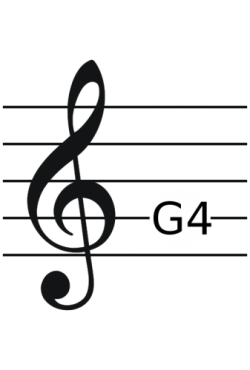 | Treble Clef When the G-clef is placed on the second line of the stave, it is called the treble clef. This is the most common clef used today, and the only G-clef still in use. For this reason, the terms G-clef a… |
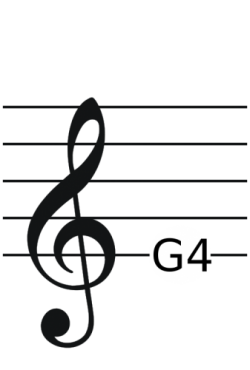 | French Violin Clef When the G-clef is placed on the first line of the stave, it is called the French clef or French violin clef. |
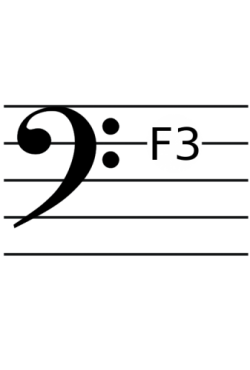 | Bass clef When the F-clef is placed on the fourth line, it is called the bass clef. This is the only F-clef used today, so that the terms "F-clef" and "bass clef" are often regarded as synonymous. |
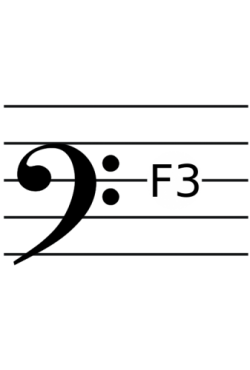 | Baritone clef When the F-clef is placed on the third line, it is called the baritone clef. |
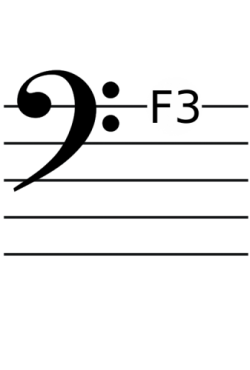 | Sub-bass clef When the F-clef is placed on the fifth line, it is called the sub-bass clef. It is identical to the treble clef transposed down 2 octaves. |
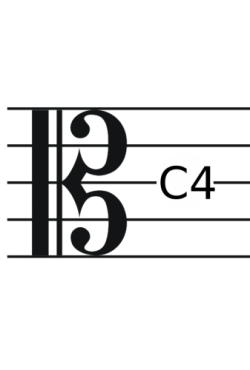 | Alto clef When the C-clef is placed on the third line of the stave, it is called the alto clef. As with all C-clefs, this line indicates the position of middle C. |
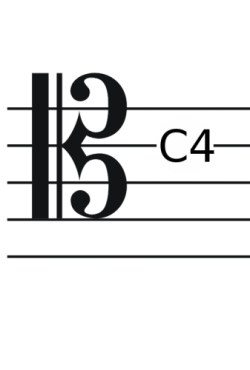 | Tenor clef When the C-clef is placed on the fourth line of the stave, it is called the tenor clef. |
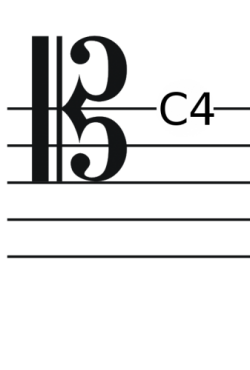 | bariton clef Because it is equivalent to the F-clef on the third line, the C-clef on the fifth line version of the baritone clef is a rarity. |
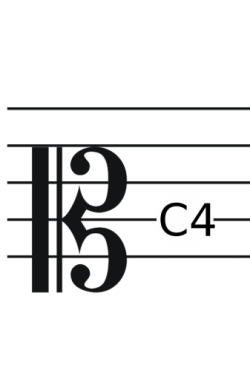 | Mezzo-soprano clef When the C-clef is placed on the second line of the stave, it is called the mezzo-soprano clef. |
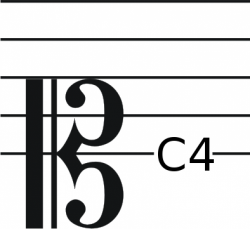 | Soprano clef When the C-clef occurs on the first line of the stave, it is called the soprano clef. |
 | Neutral clef The neutral or percussion clef is not a clef in the same sense that the F, C, and G clefs are. It is simply a convention that indicates that the lines and spaces of the stave are each assigned to a p… |
 | Tablature For guitars and other fretted instruments, it is possible to notate tablature in place of ordinary notes. In this case, a TAB-sign is often written instead of a clef. |
 | Octave clef Treble and bass clefs can also be modified by octave numbers. |
 | Double whole note or breve In music, a double whole note (American) or breve (international) is a note lasting twice as long as a whole note (or semibreve). |
 | Double whole rest of breve rest The double whole rest (or breve rest), which usually denotes a silence for the same duration. Double whole rests are drawn as filled-in rectangles occupying the whole vertical space between the secon… |
 | Breath Mark In a score, this symbol tells the performer or singer to take a breath (or make a slight pause for non-wind instruments). |
 | Caesura Indicates a brief, silent pause, during which time is not counted. In ensemble playing, time resumes when conductor or leader indicates. |
 | Engage pedal These pedal marks appear in music for instruments with sustain pedals, such as the piano, vibraphone and chimes. |
 | Release pedal These pedal marks appear in music for instruments with sustain pedals, such as the piano, vibraphone and chimes. |
 | Registered Trademark Symbol The registered trademark symbol, designated by ® (the circled capital letter "R"), is a symbol used to provide notice that the preceding mark is a trademark or service mark that has been registered w… |
 | Kitemark The Kitemark was originally conceived in 1903 as a symbol to identify products manufactured to meet British Standards' specifications. ‘Kitemark’ came from the kite shape of the graphic device which … |
 | Star-D Symbol Star-D Kosher Certification, also known as the Vaad Hakashrus of Baltimore, is a kashrus certifying agency based in Baltimore, Maryland under the administration of Rabbi Moshe Heinemann, with the inv… |
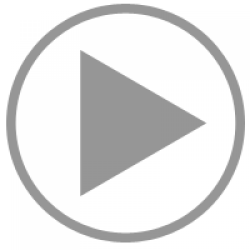 | Play Symbol Play media |
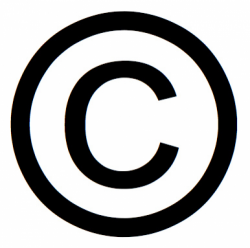 | Copyright symbol The copyright symbol, or copyright sign, designated by © (a circled capital letter "C"), is the symbol used in copyright notices for works other than sound recordings (which are indicated with the ℗ … |
